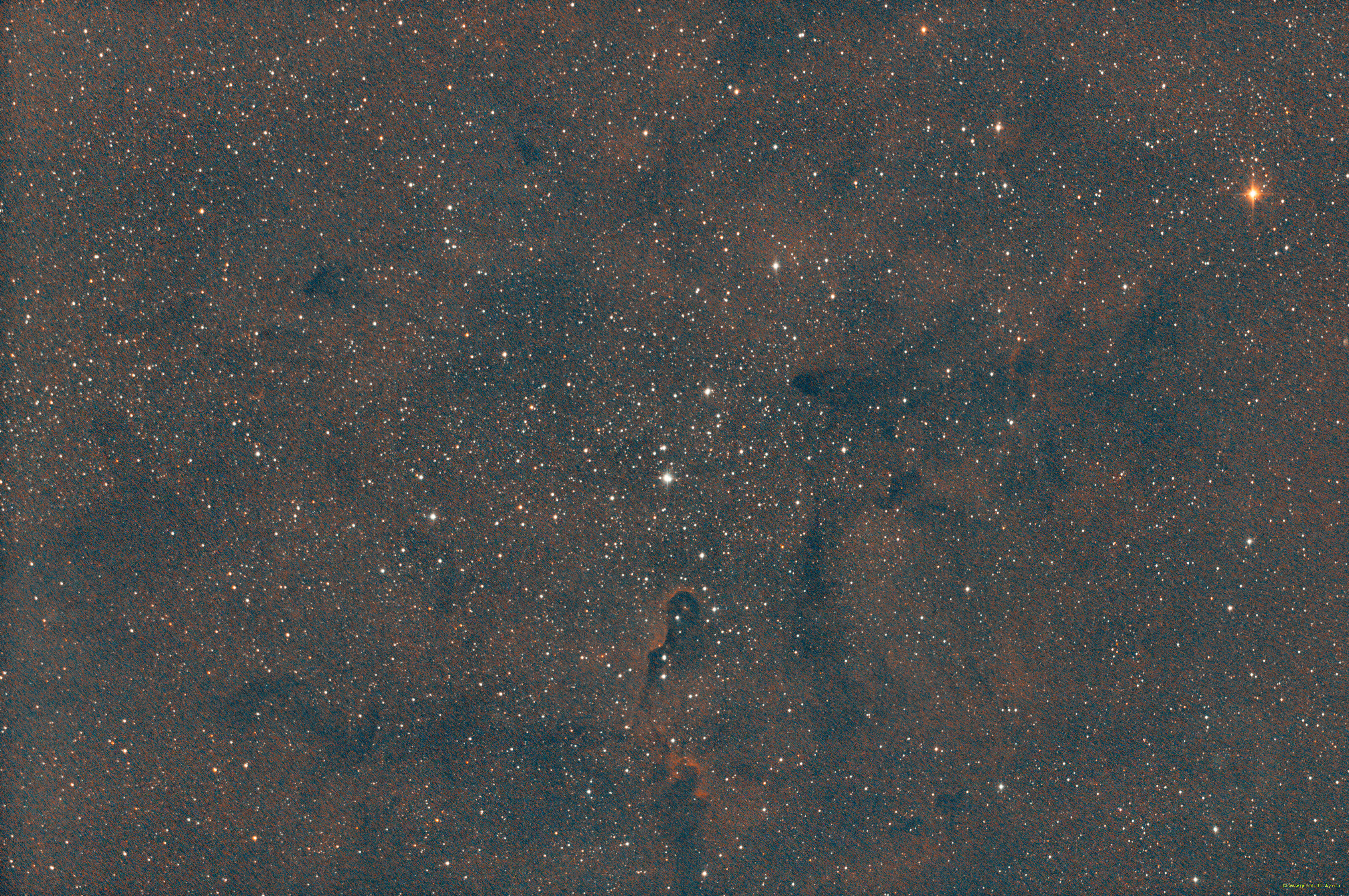IC1396 - Cepheus

como vemos en las astrofotografías son varios los entrantes claros y oscuros que componen todo el conjunto.
IC 1396 brilla desde {{ object[0].IC1396.mesDistances[0].dist }} {{ object[0].IC1396.mesDistances[0].unit }} de distancia y, en realidad es un complejo de nebulosas claras y oscuras que conforman un conjunto mayor de 3 grados que además envuelven un cúmulo abierto situado en el centro, que es el que realmente IC 1396.
En el centro de todo este complejo, está la estrella SAO 33626, una de las triples más interesante y que vale la pena observar o fotografiar con buen aumento. Tiene una magnitud conjunta aproximada de 5.6.
Aún hay más pues 2 grados al N de IC 1396, tenemos la estrella μ-Cep, de la 4ª Magnitud que además tiene nombre propio, pues es conocida como "El Granate" o "The Garnet", Es uno de las estrellas más rojas que se pueden observar a simple vista, en realidad es una Supergigante roja además, es variable de periodo irregular.
IC1396 - Trompa de Elefante - en la IA
IC 1396 is a large emission nebula located in the constellation Cepheus, about 2,400 light-years away from Earth. It's often referred to as the Elephant's Trunk Nebula due to its most prominent feature, a dark globule of gas and dust that resembles an elephant's trunk.
Here's a breakdown of what makes IC 1396 so interesting:
-
Emission Nebula: IC 1396 is classified as an emission nebula because its gas is energized by the intense ultraviolet radiation from a nearby massive star, HD 206267. This energy causes the gas (primarily hydrogen) to ionize and emit light, creating the nebula's colorful glow.
-
The Elephant's Trunk (IC 1396A): This is a particularly dense region of gas and dust that is being sculpted by the radiation and stellar winds from HD 206267. It's a site of active star formation. Inside the dark globule, new stars are being born as gravity pulls the material together. The Elephant's Trunk is constantly evolving as the radiation and winds erode its outer layers.
-
Size: IC 1396 is a vast structure, spanning approximately 5 degrees on the sky. This is equivalent to about 10 times the apparent diameter of the full moon.
-
Appearance: In images, IC 1396 is often shown with vibrant colors, typically reds and blues, corresponding to different elements within the nebula. The red color comes from ionized hydrogen, while blue often represents ionized oxygen.
-
Star Formation: IC 1396 is a rich star-forming region. The radiation and stellar winds from HD 206267 compress the surrounding gas and dust, triggering the collapse of these materials and the birth of new stars.
-
Observation: IC 1396 can be observed with telescopes of various sizes. The Elephant's Trunk itself is a popular target for astrophotographers. However, due to its large size and faintness, it's best observed under dark skies with minimal light pollution.
In summary, IC 1396 is a beautiful and dynamic nebula, notable for its iconic Elephant's Trunk feature and its role as a stellar nursery. It offers astronomers a valuable opportunity to study the processes of star formation and the interaction between massive stars and their surrounding environments.
Más información sobre IC1396 en NASA/IPAC.
Mapa alrededor de IC1396
Otros identificadores de IC1396:
"[KC2019] Theia 9","C 2137+572" ,"CTB 105" ,"Cl Collinder 439" ,"IC 1396" ,"OCISM 46" ,"OCl 222" ,"OCl 222.0" ,"[DGW65] 144" ,"[KPR2004b] 500" ,"Cl Trumpler 37" ,"[KPS2012] MWSC 3539",

